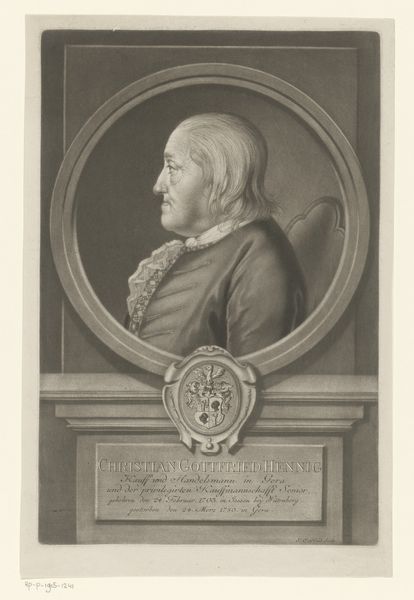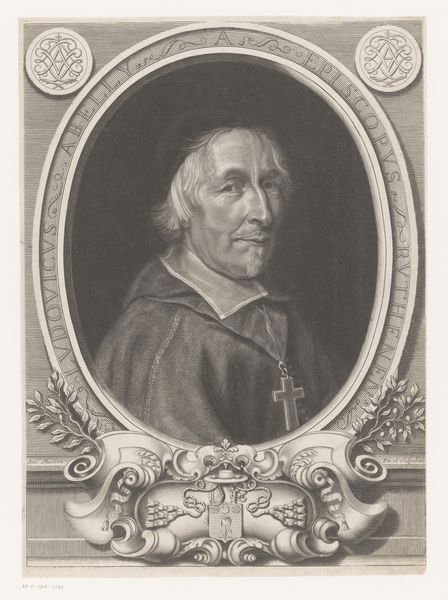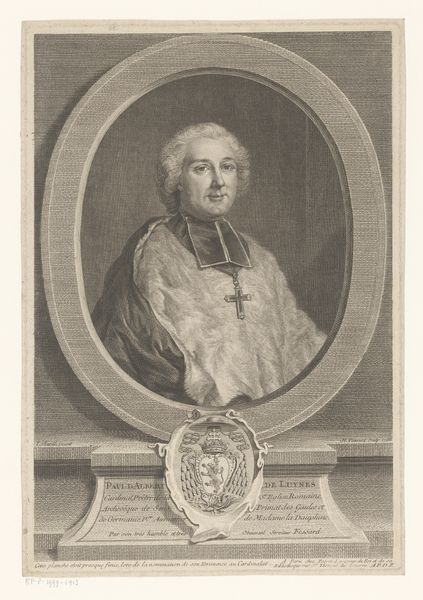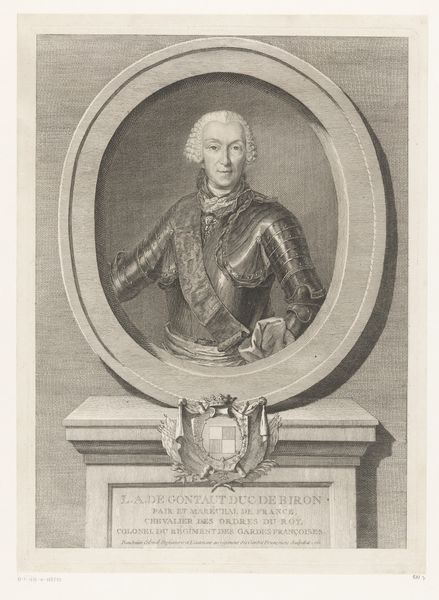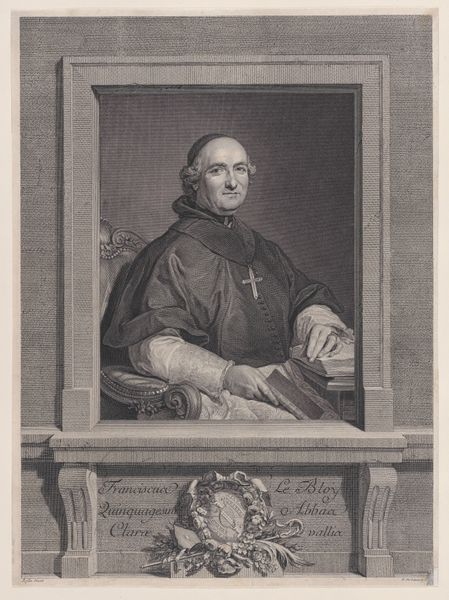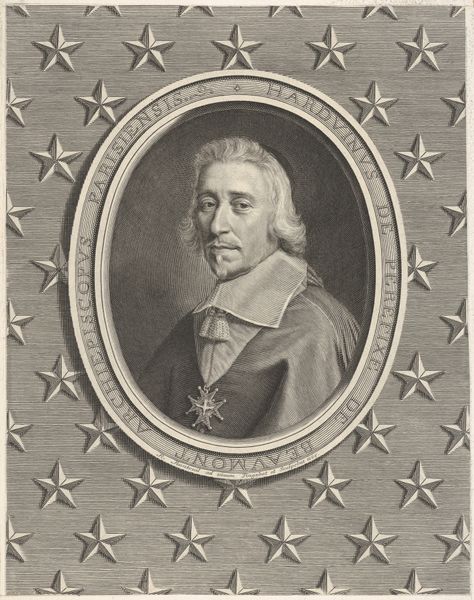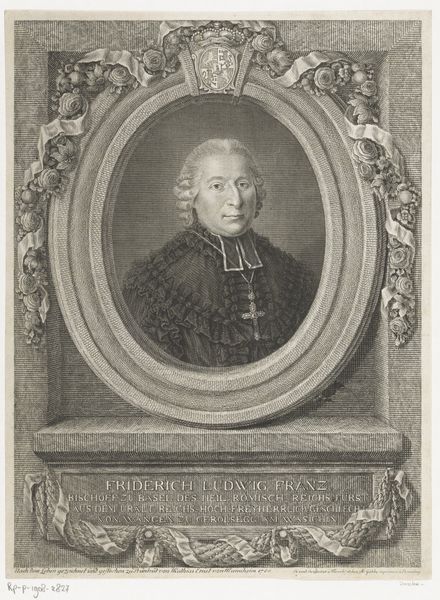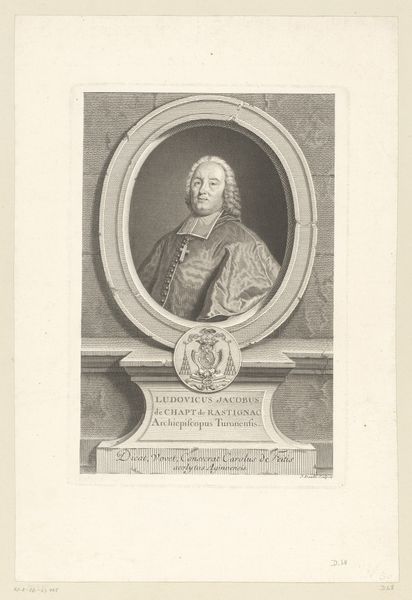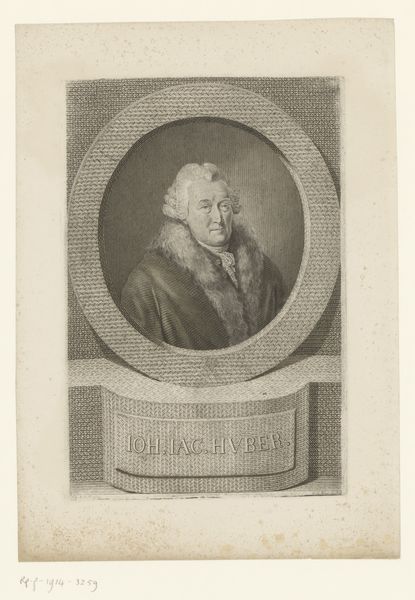
print, engraving
#
baroque
# print
#
old engraving style
#
historical photography
#
line
#
history-painting
#
engraving
Dimensions: height 440 mm, width 341 mm
Copyright: Rijks Museum: Open Domain
Editor: So, this engraving is titled "Portret van Oronce Finé de Brianville," dating from 1698-1699, made by Pierre Drevet. It's currently at the Rijksmuseum. There’s something very formal about this, almost…staged? What’s your interpretation? Curator: What I find most striking is how this print operates within a larger system of image production and circulation. Think about it – this wasn’t just a portrait, it was a carefully crafted *reproduction*. The choice of engraving itself speaks volumes; it's about making a likeness accessible. How does making the image a print effect your interpretation? Editor: I guess I hadn't considered that it was made to be distributed. Does that mean it's less about capturing his individual personality and more about projecting his role or status? Curator: Precisely! Drevet isn't just showing us Oronce Finé de Brianville. He's showing us the *Abbot* of Pontiniac. The inscription framing him reinforces that. The placement within the museum setting can further amplify certain meanings too; how might seeing it framed by other historical figures affect the reading of the image? Editor: So it's about the politics of representation as much as personal likeness. Did the medium itself influence who got portrayed? Curator: Absolutely. Printmaking during this period played a crucial role in constructing and disseminating power. Portraits of clergy, nobility – these images weren't just about appearances, they were carefully constructed statements of authority. I wonder if they thought about the impact this might have for the common man back in the day. Editor: That’s a very different angle from just considering the artistic skill! I hadn't really thought about how prints can have different cultural implications. Curator: Exactly! It opens up new ways to approach art – not just as individual masterpieces but as players in a bigger game. Editor: That’s really shifted my thinking; it’s fascinating to see how art reflects, and creates, a historical context.
Comments
No comments
Be the first to comment and join the conversation on the ultimate creative platform.
